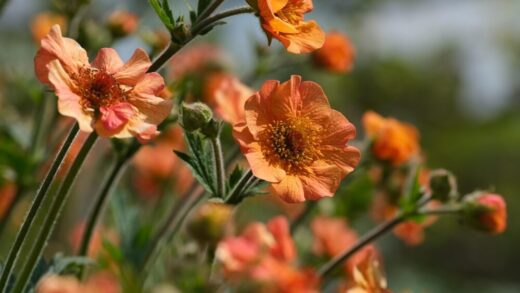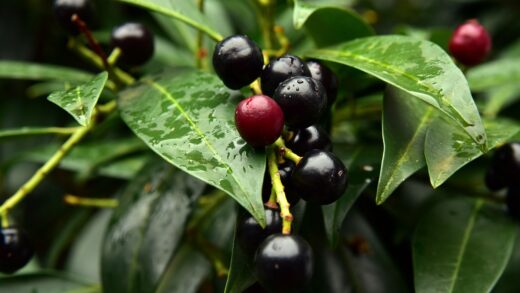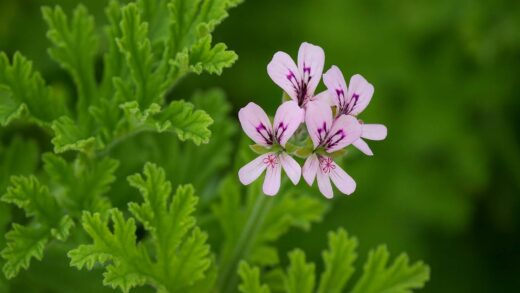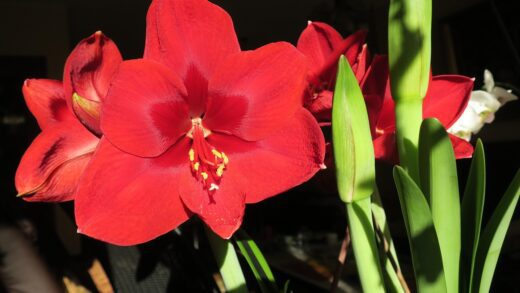Successfully guiding your bluebeard shrub through the winter months is a crucial aspect of its long-term care, ensuring it returns with vigor and vitality the following spring. While modern cultivars have been bred for improved hardiness, the plant’s survival and performance can be significantly enhanced by a few simple preparatory steps in the autumn. Understanding how this shrub responds to cold and what it needs for protection will give you the confidence to manage it effectively through its dormant period. The primary goal of winter care is not to prevent dormancy, which is a natural and necessary cycle, but to protect the plant’s sensitive crown and root system from the most extreme conditions.
Bluebeard is generally considered a dieback sub-shrub in colder climates, meaning that the top growth may be killed back to the ground by freezing temperatures, but the plant will regrow from its hardy root system in the spring. This is a natural survival strategy and is the very reason why an annual hard prune is so effective for this plant. In milder climates, some of the woody stems may survive the winter, but the plant still benefits from being cut back to encourage the most vigorous new growth. Therefore, you should not be alarmed if the top of your plant looks lifeless after a hard winter; the life is safely stored in the roots.
The key to successful wintering lies in protecting the crown of the plant—the point where the stems emerge from the root system. This area is the most vulnerable part of the plant and contains the buds from which all of next year’s growth will emerge. Insulating this crown from the damaging effects of deep freezes and the freeze-thaw cycles that can occur in late winter is the most important task. A thick layer of mulch applied after the ground has begun to cool is the most effective way to provide this essential protection.
It is also important to ensure the plant enters winter in a healthy and well-hydrated state. Do not fertilize late in the season, as this can encourage tender new growth that is easily damaged by frost. Continue to water the plant as needed throughout the autumn, allowing it to naturally harden off and prepare for dormancy. A well-prepared plant is far more resilient and better equipped to handle the stresses of winter than one that is weak or stressed going into the cold season.
Assessing winter hardiness in your zone
Understanding the concept of plant hardiness zones is the first step in determining how much winter protection your bluebeard will need. These zones, established by agricultural authorities, divide regions based on their average annual minimum winter temperature. Bluebeard is typically hardy in zones 5 through 9. If you live in a zone at the colder end of this range, such as zone 5 or 6, providing winter protection is highly recommended to ensure the survival of the plant’s root system. In warmer zones, like 7 through 9, bluebeard will often survive the winter with little to no special protection.
More articles on this topic
The specific cultivar of bluebeard you are growing can also influence its cold tolerance. While most are rated for the same general hardiness range, some newer varieties may have slightly improved hardiness. Conversely, certain cultivars with unique foliage, such as those with variegated or chartreuse leaves, may be slightly less vigorous and could benefit from extra protection even in a moderately cold zone. Consulting the plant tag or nursery information for your specific variety can provide valuable guidance on its expected hardiness.
Microclimates within your own garden can also play a significant role. A bluebeard planted in a sheltered location, such as against a south-facing wall, will be protected from harsh winter winds and benefit from the radiated heat from the structure. This can effectively place it in a slightly warmer “micro-zone” than a plant in an open, exposed location. Conversely, a plant situated in a low-lying area where cold air tends to settle will experience colder temperatures and may require more protection.
Ultimately, the best approach is to be observant and err on the side of caution, especially during the plant’s first few winters in your garden. Even in a zone where bluebeard is considered fully hardy, an unusually severe winter or a winter with little insulating snow cover can cause damage. Providing a protective layer of mulch is a simple, low-effort insurance policy that can make the difference between a thriving plant and one that struggles to recover in the spring.
Preparing the plant for dormancy
The process of preparing your bluebeard for winter begins in the late summer and autumn, well before the first frost. One of the most important steps is to cease all fertilization by mid-summer. Applying fertilizer, especially nitrogen, late in the season encourages the plant to produce a flush of new, tender growth. This new growth will not have adequate time to mature and “harden off” before cold weather arrives, making it extremely vulnerable to frost damage. Allowing the plant to naturally slow its growth is a crucial part of its preparation for dormancy.
More articles on this topic
Watering practices should also be adjusted in the autumn. While you should not let the plant go into winter completely dry, you should gradually reduce supplemental watering as the weather cools. The goal is to ensure the soil is slightly moist but not saturated. A well-hydrated plant is better able to withstand the drying effects of cold winter winds. A final, deep watering after the leaves have dropped but before the ground freezes solid can be particularly beneficial, especially in a dry autumn.
A key decision is what to do with the stems. Many gardeners are tempted to prune the plant back in the autumn as part of their garden cleanup. However, for bluebeard, it is generally best to leave the stems standing through the winter. These old stems, while they may not survive, provide a degree of protection for the crown of the plant, trapping insulating snow and leaves around its base. The official hard pruning should be delayed until late winter or early spring, just before new growth begins.
As the plant enters dormancy, its leaves will yellow and drop after the first few hard frosts. This is a completely normal part of its life cycle. Once the leaves have fallen, you can perform a final cleanup of the debris from around the base of the plant. This helps to remove any potential overwintering sites for pests or disease spores. At this point, the plant is fully prepared for its winter rest, and the next step is to provide physical protection.
The role of mulch in winter protection
Mulching is the most effective and important technique for protecting your bluebeard shrub through the winter, especially in colder climates. The purpose of a winter mulch is not to keep the ground warm, but rather to keep it consistently cold. It acts as an insulating blanket that shields the soil from the sun’s rays and extreme air temperature fluctuations. This prevents the damaging freeze-thaw cycles that can heave plants out of the ground and damage their root systems.
The best time to apply winter mulch is in late autumn, after the first hard frost has occurred and the ground has started to freeze. Applying mulch too early, while the ground is still warm, can trap heat and moisture, potentially leading to crown rot. It can also provide a cozy home for rodents who may then girdle the stems of the plant during the winter. Waiting until the plant is fully dormant and the ground is cold avoids these potential problems.
A variety of organic materials can be used for winter mulch. Shredded leaves, straw, pine needles, or shredded bark are all excellent choices. Apply a loose, airy layer of mulch about 10-15 centimeters deep, piling it up around the base and over the crown of the plant. This thick layer will provide the necessary insulation to protect the roots and the latent buds at the crown from the coldest temperatures of winter. The standing stems of the plant will help to hold this mulch in place.
In the spring, it is important to remove the heavy layer of winter mulch in a timely manner. As the weather warms and the threat of hard frost has passed, gradually pull the mulch away from the crown of the plant. This allows the sun to warm the soil and encourages the new growth to emerge. Leaving the mulch in place for too long can delay the plant’s growth and trap excess moisture around the crown. The old mulch can be added to your compost pile or spread thinly around the garden bed.
Care and concerns during winter thaws
Winter weather is often unpredictable, and periods of unseasonably warm weather, or winter thaws, can occur even in the coldest climates. While a brief warm-up might seem harmless, it can present some challenges for dormant plants like bluebeard. The primary concern is that a prolonged thaw can “trick” the plant into thinking spring has arrived, causing it to break dormancy prematurely. If the plant begins to produce new, tender growth, that growth will be extremely vulnerable to damage when cold temperatures inevitably return.
A proper layer of winter mulch is your best defense against the effects of a winter thaw. By insulating the soil, the mulch helps to keep the ground frozen and the plant’s root system dormant, even if the air temperature rises for a few days. This prevents the plant from being stimulated into premature growth. This is a key reason why the purpose of winter mulch is to keep the ground consistently cold, not warm. It acts as a buffer against these confusing temperature swings.
Another concern during winter thaws, especially when followed by a rapid refreeze, is the formation of ice. If melting snow or rain pools around the base of the plant and then freezes solid, it can encase the crown in ice. This can be very damaging, as it can suffocate the crown and damage the dormant buds. This risk is another powerful argument for ensuring your bluebeard is planted in well-draining soil from the beginning, as good drainage prevents water from pooling at the surface.
There is little you need to do actively during a winter thaw other than ensure your mulch layer is intact. Resist the temptation to remove the mulch or prune the plant during a warm spell in mid-winter. It is best to let nature take its course and wait until the established time in late winter or early spring to perform any maintenance. The plant has its own internal clock, and as long as the roots are protected and dormant, it can typically handle these intermittent warm periods without issue.


















